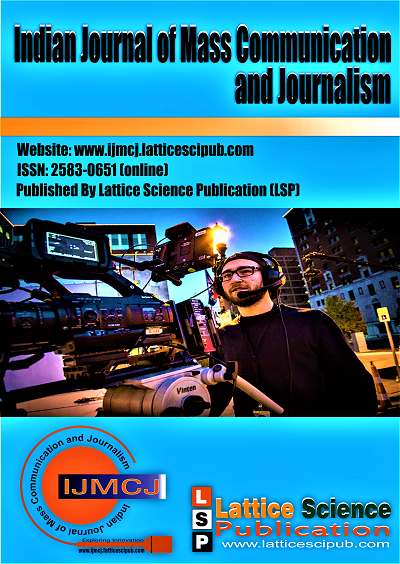Evaluating the Impact of Fake News on Intolerance Among Socio-Economic Classes 3 & 4
Main Article Content
Abstract
The proliferation of fake news in the social media era has significant consequences for individuals, society, and democratic processes. Research has highlighted the detrimental effects of fake news on various aspects of society, including public opinion, political discourse, and individual decisionmaking. One consequence of fake news is the erosion of public trust in media and institutions. The finding reveals that fake news spreads much faster than credible information. This is a dangerous finding because, at best, fake news can spread false hope, and at worst, it can flare hatred and incite violence. A total of 100 cases of violations of religious hate speech were identified from the media studied in this research between 2022 and 2023. Regarding the religion involved in the cases, the Islamic denomination was predominant (32%), followed by Hindus (28%) and Catholicism (20%). Hate speech and incitement to violence were the most common topics (30%), although acts of discrimination and rejection (26%) and material damage or attacks on places of worship (19%) were also reported. The finding suggests that higher education students do not want to send fake news when they broadcast information. The finding also reveals that higher education students belong to many groups, and this does not affect the number of fake news stories because students conduct advanced research on the news and verify if it has a reliable source. Findings suggest that fake news and disinformation can subtly influence emotions and attitudes, potentially leading to behavioural consequences. The findings of the studies show that economic inequality is a potent enhancer of intolerance, inducing the escalation of out-group discrimination even without the presence of new intolerant mutants. Tolerance is positively associated with national-level economic prosperity, and this relationship is stronger for higher-income earners than for those with lower incomes. Individuals with job market insecurity and lower economic status (i.e., low income) are more likely to be more intolerant of people with different faiths. Once intolerance begins to act, it is almost unstoppable in the presence of inequality. The relationship between socioeconomic status, Misinformation, and intolerance is significant, as individuals from lower SES backgrounds are often at a higher risk of engaging in violent behaviour due to factors like poverty, lack of access to education, and limited economic opportunities. Lower family incomes of 30-60 K are more vulnerable to intolerance. Studies have shown a potential link between lower socioeconomic status (SES) and higher levels of intolerance, suggesting that individuals from lower socioeconomic backgrounds may be more likely to exhibit intolerance towards others, particularly when facing economic hardship or perceived threats from different groups; Digital media has also made it easier to spread misinformation that is many a times unverifiable. While name-calling, fake news, and other forms of low-level discourse and unethical political communication have always existed, social media has undoubtedly exacerbated these problems to a new level. The relationship between socioeconomic status, Misinformation, and intolerance is significant, as individuals from lower SES backgrounds are often at a higher risk of engaging in violent behaviour due to factors like poverty, lack of access to education, and limited economic opportunities.
Downloads
Article Details

This work is licensed under a Creative Commons Attribution-NonCommercial-NoDerivatives 4.0 International License.
How to Cite
References
Allcott & Gentzkow (2017) social media and Fake News in the 2016 Election: Journal of Economic Perspectives, vol. 31, no. 2, Spring 2017(pp 211–36) : https://www.aeaweb.org/articles,
DOI: http://doi.org/10.1257/jep.31.2.211
Anouk den Hamer (2017) The Content-based Media Exposure Scale (C-ME): Development and Validation: February 2017, Computers in Human Behavior 72. DOI: https://doi.org/10.1016/j.chb.2017.02.050
Laxmi & Deepthi (2021) Media violence and aggression among young adults, vol. 9, ijip, issn 2348-5396 | issn: 2349- 3429, 390-396, 2021.
https://ijip.in/wp-content/uploads/2021/08/18.01.039.0210903.pdf
Nickie D. Phillips (2017): Violence, Media Effects, and Criminology, In book: Oxford Encyclopedia of Crime, Media, and DOI: https://doi.org/10.1093/acrefore/9780190264079.013.189
Ronojoy Sen (2018): Senior Research Fellow and Research Lead (Politics, Society and Governance) at the Institute of South Asian Studies (ISAS), National University of Singapore (NUS). 2018. https://www.isas.nus.edu.sg/research_team/ronojoy-sen/
Srinivas P.Y.K.L. (2022) Fake spreader is a narcissist; Real spreader is a Machiavellian prediction of fake news diffusion using psycho-sociological facets: July 2022. Expert Systems with Applications 207(5):117952. DOI: http://doi.org/10.1016/j.eswa.2022.117952
Sayeed Al-Zaman (2024) Social Media Users' Engagement with Religious Misinformation: An Exploratory Sequential Mixed-Method, Emerging Media Volume-2, Issue-2-June 2024, Pages-165-230. DOI: http://dx.doi.org/10.1177/27523543241257715





